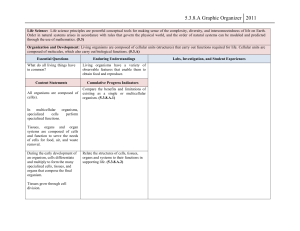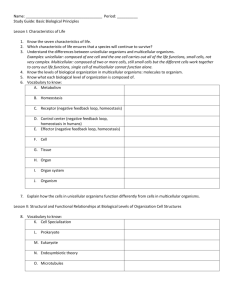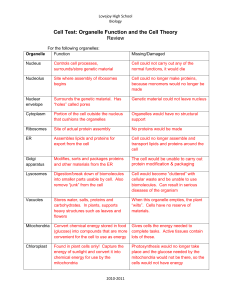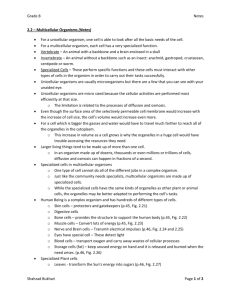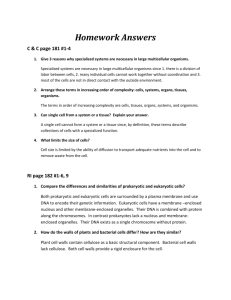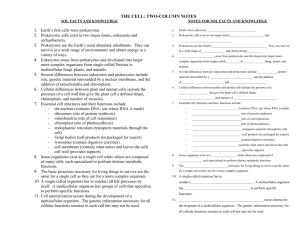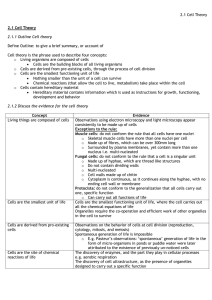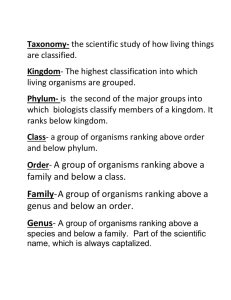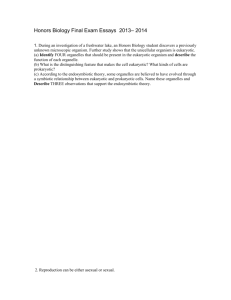Section 3 Cell Presentation Notes
advertisement
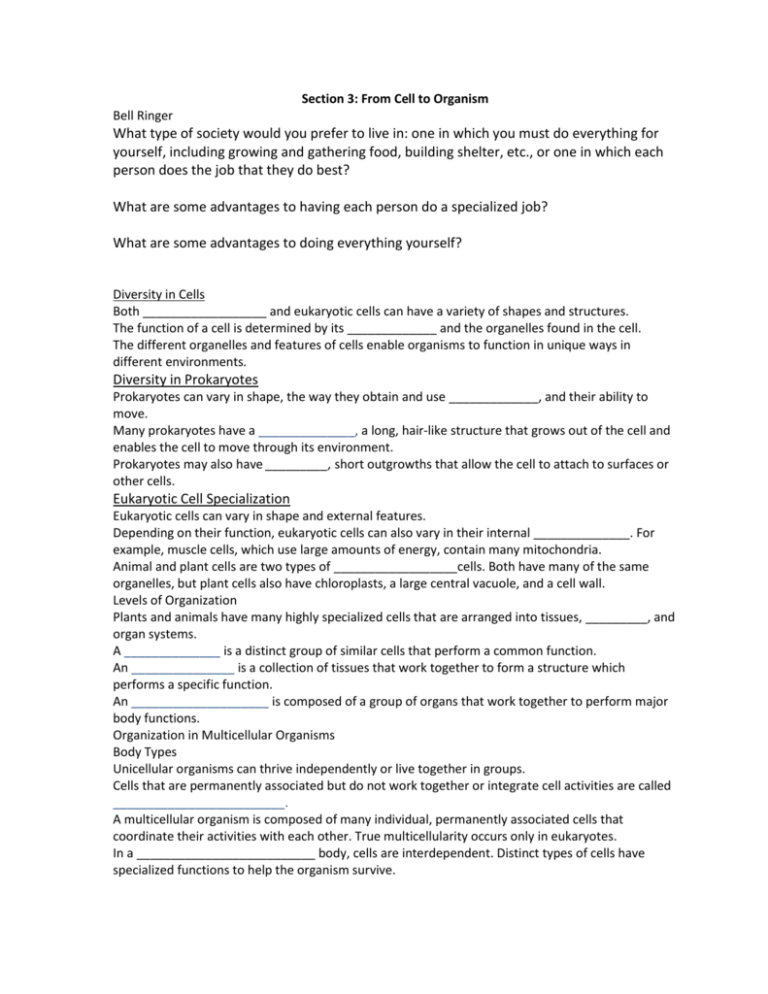
Section 3: From Cell to Organism Bell Ringer What type of society would you prefer to live in: one in which you must do everything for yourself, including growing and gathering food, building shelter, etc., or one in which each person does the job that they do best? What are some advantages to having each person do a specialized job? What are some advantages to doing everything yourself? Diversity in Cells Both __________________ and eukaryotic cells can have a variety of shapes and structures. The function of a cell is determined by its _____________ and the organelles found in the cell. The different organelles and features of cells enable organisms to function in unique ways in different environments. Diversity in Prokaryotes Prokaryotes can vary in shape, the way they obtain and use _____________, and their ability to move. Many prokaryotes have a ______________, a long, hair-like structure that grows out of the cell and enables the cell to move through its environment. Prokaryotes may also have _________, short outgrowths that allow the cell to attach to surfaces or other cells. Eukaryotic Cell Specialization Eukaryotic cells can vary in shape and external features. Depending on their function, eukaryotic cells can also vary in their internal ______________. For example, muscle cells, which use large amounts of energy, contain many mitochondria. Animal and plant cells are two types of __________________cells. Both have many of the same organelles, but plant cells also have chloroplasts, a large central vacuole, and a cell wall. Levels of Organization Plants and animals have many highly specialized cells that are arranged into tissues, _________, and organ systems. A ______________ is a distinct group of similar cells that perform a common function. An _______________ is a collection of tissues that work together to form a structure which performs a specific function. An ____________________ is composed of a group of organs that work together to perform major body functions. Organization in Multicellular Organisms Body Types Unicellular organisms can thrive independently or live together in groups. Cells that are permanently associated but do not work together or integrate cell activities are called _________________________. A multicellular organism is composed of many individual, permanently associated cells that coordinate their activities with each other. True multicellularity occurs only in eukaryotes. In a __________________________ body, cells are interdependent. Distinct types of cells have specialized functions to help the organism survive. The individual cells in a multicellular organism cannot survive alone and are dependent on the other ___________ of the organism. Most multicellular organisms begin as a _____________ cell, which divides to form more cells. These cells then grow and become specialized in a process called _________________________. Summary The different organelles and features of cells enable organisms to function in unique ways in different environments. Plants and animals have many highly specialized cells that are arranged into tissues, organs, and organ systems. A multicellular organism is composed of many individual, permanently associated cells that coordinate their activities with each other.
